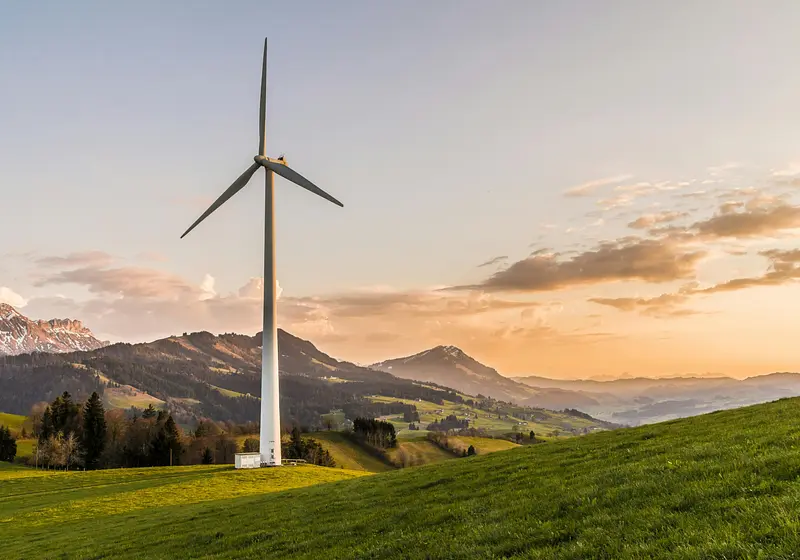As the environmental crisis looms, technological innovations emerge as potential saviors. While technological advancement often comes at the cost of the environment, we must not overlook the potential of newer technologies to address global crises. Bringing these technologies to the forefront is crucial to driving their mainstream adoption. This article delves into five such innovations that hold promise in saving our planet.

Let us slide into your dms 🥰
Get notified of top trending articles like this one every week! (we won't spam you)1. Plant-Based Plastic
Although plastic harms the environment, it has become an irreplaceable resource. Bioplastics or plant-based plastics offer a safer alternative to mitigate problems caused by oil-based plastics. Bioplastics, a rising star in the world of innovation, are making waves with their unique properties.
These plastics are derived from sugar extracted from plants like algae, sugarcane, and corn and are even used in cooking oil, offering a biodegradable alternative to traditional plastics. Polylactic acid has found exciting applications in 3D printing and is a cost-effective solution for disposable cutlery and packaging. Coca-Cola, one of the biggest plastic polluters, recently unveiled a plant-based plastic bottle prototype, hinting at a shift in the mindset of large corporations, too! As more companies adopt bioplastics, we hope to see a reduction in plastic pollution and a healthier planet for future generations.

Photo by Mali Maeder from Pexels
Take the Quiz: Which Indian city is the perfect holiday spot for you!?
Let's match you with an Indian city that you would love!
2. Solar Glass
Humans use less than 1% of the total solar energy we receive. We can consider using solar glass for construction to increase our solar energy usage. Solar Glass is transparent photovoltaic glass that can convert sun rays to electricity.
Replacing ordinary glass with solar glass can allow buildings to power themselves, reducing electricity costs. Solar glass can absorb a lot of harmful ultraviolet and infrared radiation. Solar glass is lightweight and more portable than traditional solar panels. In addition to its energy-saving benefits, solar glass can also improve indoor comfort by reducing heat gain and glare. This makes it a popular choice for commercial and residential buildings alike.
Photo by Anh Nguyen from Pexels
3. Aquaponics
Aquaponics is a system that combines aquaculture, the practice of raising and harvesting aquatic organisms like fish, with hydroponics, the cultivation of plants without soil in water. Aquaponics uses the products of marine animals as nutrients for plants, which reduces the need for fertilizers. Plants remove nitrogenous waste from the water, which is returned to the fish tank, making an efficient closed-circuit farming method.
Aquaponics is a farming method of the future as it requires one-sixth of the water volume needed in traditional farming but can grow eight times more food per acre. Additionally, aquaponics can be done in urban areas, reducing the need for long-distance transportation of food and promoting local food production.

Photo by Elle Hughes from Pexels
4. Carbon Capture and Storage
Industries have the most significant carbon footprint, and it is tough to decrease the carbon footprint of the entire business sector. Carbon Capture and Storage technology, like electrostatic precipitators, is an effective solution to this problem. Carbon capture and storage technology separates carbon from other waste gases industries release.
This carbon is stored and can be used for building materials and fuels. If adopted by every industry, this technology can significantly decrease the carbon footprint and aid in solving the climate crisis. CO2 from sizable point sources, such as chemical or bioenergy plants, can be captured via CCS. After being captured, the CO2 is moved by pipeline or ship and kept in an appropriate geological formation. Most CCS plans today advocate injecting CO underground to create a "closed loop" in which carbon is taken from the Earth as fossil fuels and then put back.

5. Drones
Drone technology allows for surveying and Earth Science data collection, which scientists can use to study the terrain. Drones' industrial delivery applications can significantly reduce carbon emissions compared to diesel trucks. Drones are also used to inspect and maintain solar and wind farms, contributing to zero emissions and uninterrupted energy generation and distribution.
Drones can plant tree seeds in inaccessible areas, which helps to reforest and combat deforestation, as Team Trees does. Additionally, drones are being utilized in the construction business to monitor job sites and measure progress and in the film and entertainment industries to record breathtaking aerial videos. Future drone applications should bring forth even more inventive and practical uses as the technology develops and gets better.

In addition to technology, it is essential to focus on individual actions that can make a difference. Simple changes in our daily routines, such as using reusable bags, conserving water, and reducing energy usage, can significantly impact the environment. We must take responsibility for our actions and make conscious efforts towards a sustainable future. Remember, every small step counts towards a larger goal of preserving the planet for future generations.






.jpg)
.jpg)








